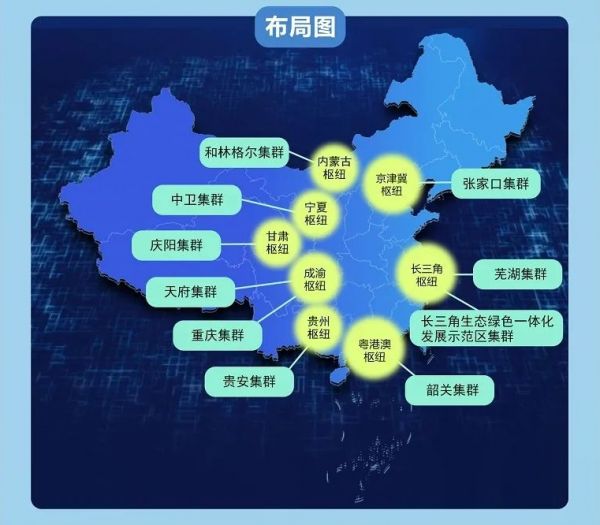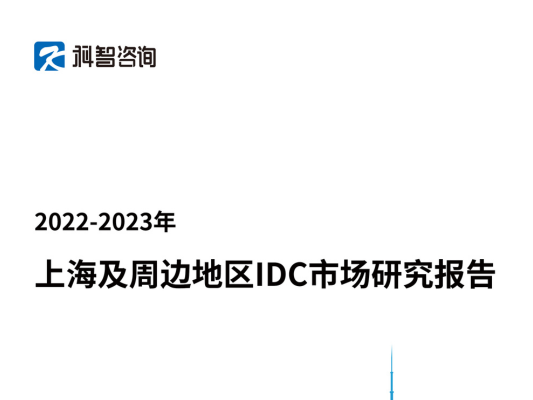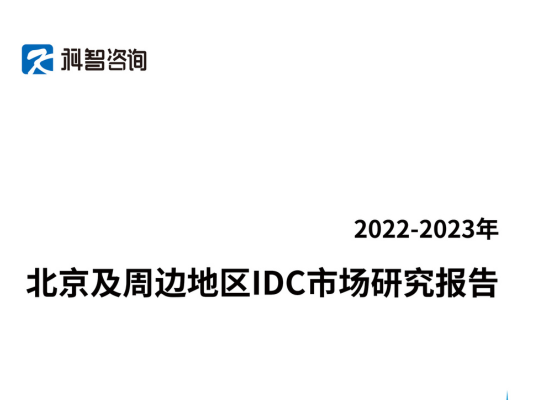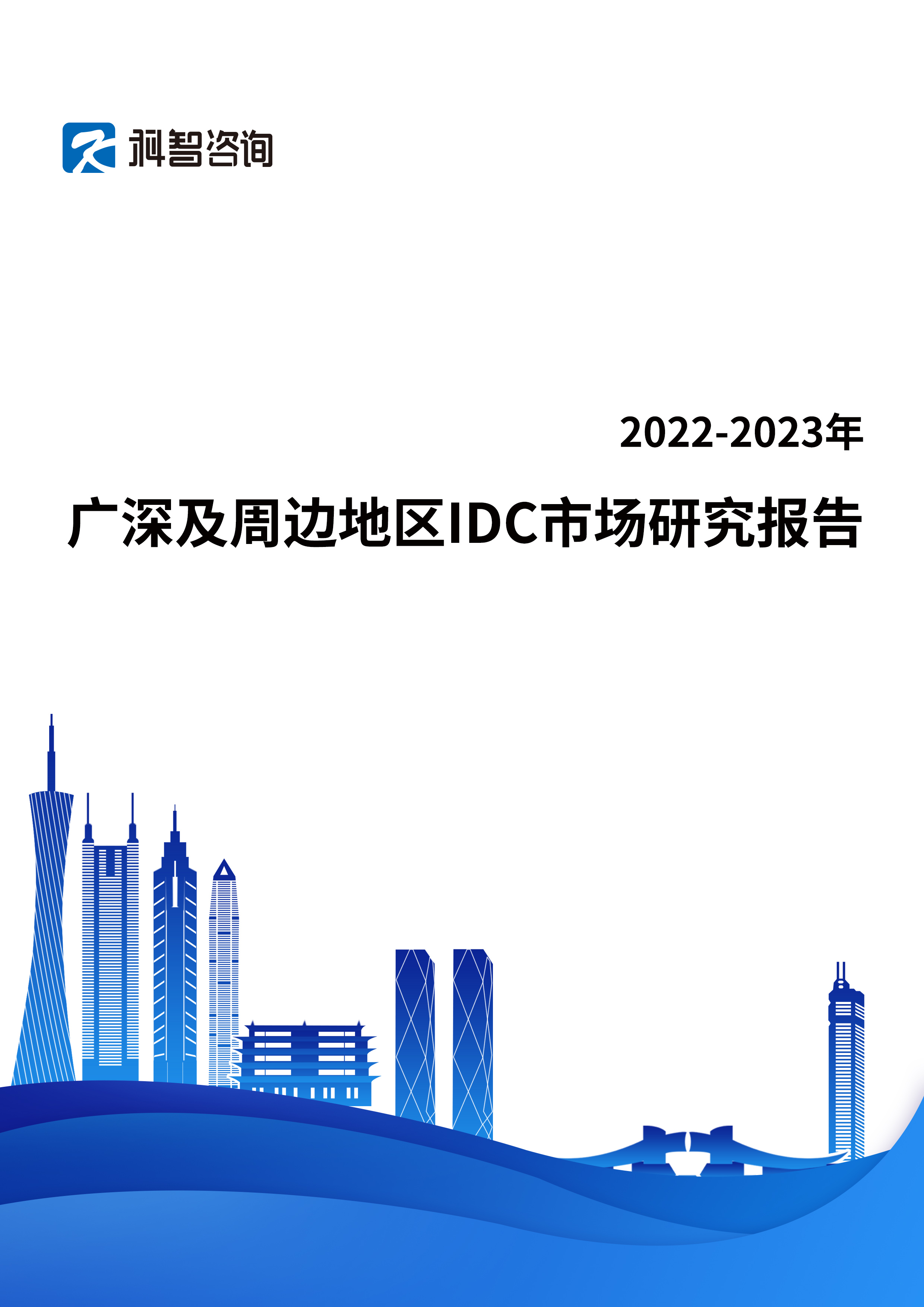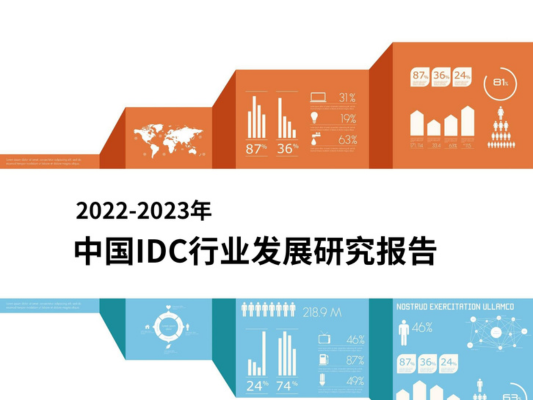China has approved the project of constructing 8 national computing hubs and 10 national data center clusters, marking the completion of the overall layout of the country's integrated big data center system, according to a recent document jointly released by several departments including China's National Development and Reform Committee (NDRC).
The "East Data and West Computing" project is an image of the layout of the national integrated big data center system. It can be traced back to the 36th collective study conducted by the Political Bureau of the Central Committee of the Communist Party of China in 2016 proposing to build a national integrated national big data center. In the following years, the state has successively promulgated relevant policies including the "Guiding Opinions on Accelerating the Construction of a National Integrated Big Data Center Collaborative Innovation System" and "National Integrated Big Data Center Collaborative Innovation System Computing Power Hub Implementation Plan".
What preparations have the provinces and cities in the eight national hub node regions (the Beijing-Tianjin-Hebei region, the Yangtze River Delta region, the Chengdu-Chongqing region, the Guangdong-Hong Kong-Macao Greater Bay Area, Inner Mongolia, Guizhou, Gansu and Ningxia) done in these years?
Beijing-Tianjin-Hebei Region
The Beijing-Tianjin-Hebei hub plans to set up a Zhangjiakou data center cluster, aiming at actively meeting the real-time computing power needs of Beijing and other places, guiding the business to migrate to the west, and build a real-time computing power center that radiates to North China, Northeast China and even the whole country.
As the core city of Beijing-Tianjin-Hebei, Beijing has always been a hot spot for data center construction, and has caused certain pressure on the supply of resources such as electricity and land in Beijing. Therefore, the Beijing-Tianjin-Hebei hub is mainly about the layout around Beijing.
Zhangjiakou City, which is close to Beijing, has used its abundant green energy advantages to develop a green digital economy for many years. It has successively issued 15 plans and supporting documents such as the "China Shuba·Zhangjiakou Big Data Industry Development Plan (2019-2025)", which fully started the construction process of "China Shuba", and planned the storage core (four counties of Bashang Plateau), computing core (Xuanjingqiao), network core (Huailai) - three development cores.
Zhangjiakou continues to promote the construction of data centers. As of the end of 2021, the city has signed 39 big data industry projects with a planned investment of 137.7 billion yuan, introduced 12 data centers operated by Alibaba, Qinhuai and Tencent, and 900,000 servers have been put into operation . The city actively carry out network construction, achieving 100% coverage of optical fiber network in urban communities and optical fiber broadband in administrative villages.
Yangtze River Delta Region
The three provinces and one city in the Yangtze River Delta have set up a data center cluster in the Triangular Ecological Green Integrated Development Demonstration Zone and a Wuhu Data Center Cluster, aiming at actively undertaking the real-time computing power needs of the central cities in the Yangtze River Delta, guiding the business to migrate to the west, and build a development pattern of "integrated coordination and radiation of the whole region" of computing resources in the Yangtze River Delta region.
The "14th Five-Year Plan for the Development of Shanghai's New-Generation Information Infrastructure" mentioned that Shanghai aims to build a multi-network collaborative three-dimensional coverage connection highland, a computing highland with abundant computing power and efficient coordination, and will build 2,000+ "light-speed building" in 2025, and 50+ "Light Speed Parks" 0. The number of data center racks is 250,000, and the computing power supply exceeds 14,000 PFlop/s.
The "Three-Year Action Plan (2021-2023) of the Yangtze River Delta Regional Integrated Development Informatization Task Force" proposes to accelerate the construction of a national-level regional data center cluster in the Yangtze River Delta and integrate the storage and computing infrastructure. Commission of Economy and Informatization of three provinces and one city (Zhejiang Province, Jiangsu Province, Anhui Province, and Shanghai Municipality) take the lead to "accelerate the construction of new-generation artificial intelligence new infrastructure", and the Shanghai Municipal Commission of Economy and Information Technology takes the lead to "accelerate the construction of Shanghai International Data Port, continuously expand international communication export capacity and build a world-class information and communication hub.” ???????????
Chengdu-Chongqing Region
The Chengdu-Chongqing area refers to Sichuan Province and Chongqing City. The Chengdu-Chongqing hub plans to set up Tianfu data center cluster and Chongqing data center cluster. The main task is to balance the deployment of computing resources between the city and the surrounding areas, and to connect with the "East and West". .
In the "14th Five-Year Plan" New Infrastructure Construction Plan of Sichuan Province released in September 2021, it is proposed to coordinate the promotion of data center construction, and strive to build a data center cluster development pattern with advanced technology, reasonable structure, matching supply and demand, green and low carbon, and high efficiency. The National Development and Reform Commission has newly approved four places to launch the construction of national hub nodes of the national integrated computing power network build a national-level data circulation center, a data shooting range, a computing power dispatch center and an international data portal, and build an integrated big data center collaborative innovation system with two levels of digital center clusters and urban data centers, cloud computing and edge computing.
The plan proposes to build a high-level 5G and fiber-optic ultra-broadband "dual Gigabit" network. By 2025, there will be 250,000 5G base stations, covering more than 60% of users. The number of data center racks has reached 500,000, and the computing power level has reached 500 PFlop/s.
Guangdong-Hong Kong-Macao Greater Bay Area
The hub of the Guangdong-Hong Kong-Macao Greater Bay Area plans to set up a Shaoguan data center cluster, aiming at actively meeting the real-time computing power needs of Guangzhou, Shenzhen and other places, guiding the business to migrate to the west, and build a real-time computing power center that radiates to South China and even the whole country.
Shaoguan is located at the junction of Guangdong, Hunan and Jiangxi provinces. It is the northern gate of Guangdong and an important node connecting the mainland with the Guangdong-Hong Kong-Macao Greater Bay Area. It has good power, security, network and other foundations, and has natural advantages in the development of the data center industry. Shaoguan City has always emphasized the need to actively participate in the construction of the national hub node of the national integrated big data center in the Guangdong-Hong Kong-Macao Greater Bay Area.
Shaoguan City has issued a series of industrial policies such as "Shaoguan City's Measures for Promoting the Innovation and Development of Big Data Industry (Trial)" to vigorously attract relevant enterprises to settle in. In July 2021, the "Shaoguan Big Data Industry Cooperation Summit Forum" was sponsored by the Shaoguan Municipal People's Government and undertaken by the China IDC circle. , cleaning and processing, electronic information manufacturing, software and information technology, outsourcing services, e-commerce, big data finance, etc.
According to the plan, by 2025, the Shaoguan data center cluster will be built with 500,000 standard racks and 5 million servers, with an investment of over 50 billion yuan.
Gansu Province
Qingyang City, Gansu Province is listed as a national hub node of the national computing power network. It is positioned to create a green, intensive and secure data center cluster, focusing on serving the computing power needs of Beijing-Tianjin-Hebei, Yangtze River Delta, Guangdong-Hong Kong-Macao Greater Bay Area and other regions.
Compared with the "Eastern" cluster, Qingyang City is not that popular. However, over the years, Qingyang City has actively promoted the digital industry and cooperated with large domestic cloud manufacturers to build data centers. According to reports, since the launch of "13th Five-Year Plan", Qingyang City has built a big data center computer room that meets the international T3+ standard, accommodating 1016 groups of cabinets.
In September 2020, the national "East Data and West Computing" industry alliance was established in Lanzhou City, Gansu Province, and Qingyang City launched the national "East Number and West Number" Qingyang pilot project at the same time. Entering the "14th Five-Year Plan", Qingyang City proposed the city's "one cloud", "one data brain" and "one operation center" to coordinate project implementation, infrastructure, data resources, and security elements. Combined with the actual situation of Qingyang, research and formulate a policy system and service system to support the development of the digital economy, and attract outstanding enterprises in terms of talents and investment promotion.
Inner Mongolia Autonomous Region
The Helinger data center cluster is planned to be established at the Inner Mongolia hub. The main task is to give full play to the location advantage of the cluster adjacent to Beijing-Tianjin-Hebei, provide support for the high real-time computing power needs of Beijing-Tianjin-Hebei, and provide non-real-time computing power for regions such as the Yangtze River Delta. Assure.
Inner Mongolia Autonomous Region has an excellent natural environment and abundant clean energy such as wind and light. Although it is located in the "west", "circling the capital" is one of the main concepts of relevant cities in the autonomous region. In recent years, the construction of data centers in Inner Mongolia has begun to take shape, especially in Helinger, Ulanqab and other regions, attracting many large data centers such as Apple, Ucloud, Kuaishou, and Huawei.
The "Government Work Report" of the Inner Mongolia Autonomous Region in 2022 clearly stated that the construction of digital Inner Mongolia should be vigorously promoted. Improve the information infrastructure, build Hohhot and Baotou "gigabit cities" and secondary nodes for industrial Internet identification analysis such as coal, rare earth, and chemical industries, build a national hub node for a national integrated computing power network, and build 10,000 5G base stations. ????????????????
Guizhou Province
Guizhou Hub plans to set up a cluster of data centers in Gui'an, aiming at optimizing the stock and improve the efficiency of resource utilization, mainly to support the Yangtze River Delta, Guangdong-Hong Kong-Macao Greater Bay Area, etc., and actively undertake the computing power needs of the eastern region.
"Province with Big Data" is a development strategy that Guizhou Province has achieved after years of hard work, and it is also one of the labels of Guizhou Province. Since the first Digital Expo in 2015, Guizhou Province has vigorously developed the big data industry, promoted the construction of digital infrastructure, and created an excellent development environment for the data center industry.
Guizhou Province has set an industrial goal of building a data center industry cluster with an annual output value of 60 billion yuan, and has done a lot of supporting work for this. In terms of network, we will build a dedicated channel for international Internet data in Guiyang and Gui'an, and carry out IPv6 upgrades of the province's backbone network, metropolitan area network and access network, to create a fiber coverage pattern of "100M villages, 10G urban areas, and 10G parks".
In recent years, the data center cluster in Gui'an New Area has attracted a large number of outstanding enterprises including China Telecom, China Unicom, China Mobile, Huawei, Apple, Tencent and Foxconn. At present, 8 large-scale data centers have been built in Gui'an, Guiyang, with a cumulative investment of 13.165 billion yuan.
Ningxia Hui Autonomous Region
The Zhongwei data center cluster is planned to be established in the Ningxia hub. The main task is to give full play to the advantages of regional renewable energy enrichment, actively undertake the computing power demand in the east, and guide the data center to take an efficient, clean, intensive, and circular green development path.
Zhongwei City is an oasis city in the desert. Since 2013, Zhongwei City has established the cloud computing and big data industry as "Project No. 1". Since 2019, the Zhongwei Municipal People's Government has held the "Cloud Sky Conference" every year to promote local digital construction. In 2021, it was approved to build a new national Internet exchange center, which further laid the foundation for the construction of a national hub.
As of 2021, Zhongwei has built 6 large and super-large data centers including China Mobile, China Unicom, Meili Cloud, and Tianyun Network, and is under construction of China Telecom Phase I, China Unicom Zhongwei Cloud Data Center Phase II, etc. Data center, the China Radio and Television Data Center project is in the early stages of work, and the installed capacity of servers has reached 600,000 units. Among the cities in the central and western regions of the country, the installed capacity of servers ranks among the best.
The "Government Work Report" of Ningxia Hui Autonomous Region in early 2022 clearly stated that it is necessary to seize the opportunity of "East and West", build a high-level national integrated computing network Ningxia hub, expand 5G, big data, artificial intelligence and other application scenarios, cultivate high-level There are 1,000 cloud enterprises and 13 service industry clusters.
The full-scale launch of the "East Data and West Computing" project has attracted a lot of attention. However, it can be seen from the work in various regions over the years that "calculating the east and the west" is a well-prepared and long-term project. In addition to the hot concerns, more regions and industry practitioners are required to build and promote them in a solid manner, in order to truly realize the construction of a national integrated big data center innovation system and provide the most solid foundation for digital China.
About IDCNova
IDCNova (Website: www.idcnova.com) is registered under the Hong Kong based Digital Intelligence International Company Limited. As the international presence of Zhongke Zhidao (Beijing) Co Ltd, Ditital Intelligence International aimes at establishing IDCNOVA as a professional media and consulting organization focusing on Internet data center and cloud computing industry, with proactive participation in global emerging markets.
IDCNOVA shares the partent company's unparalleled industry resources and influences in China to track the growth of the ecosystem by delivering news and professional advise on data center in China.
Industry Report:
2021-2022 China Data Center Industry Electromechanical Equipment Market Research Report
![]() 2021-2022 China Data Center Industry Electromechanical Equipment Market Research Report.pdf
2021-2022 China Data Center Industry Electromechanical Equipment Market Research Report.pdf
2020-2021 China IDC Market Research Report
![]() Sample 2020-2021 China IDC Market Research Report.pdf
Sample 2020-2021 China IDC Market Research Report.pdf
2020-2021 IDC Market Analysis Report in Beijing and Surrounding Areas
![]() Sample 2020-2021 IDC Market Research Report for Beijing and Surrounding Areas.pdf
Sample 2020-2021 IDC Market Research Report for Beijing and Surrounding Areas.pdf
2020-2021 IDC Market Analysis Report in Shanghai and Surrounding Areas
![]() Sample 2020-2021 IDC Market Research Report for Shanghai and Surrounding Areas.pdf
Sample 2020-2021 IDC Market Research Report for Shanghai and Surrounding Areas.pdf
2020-2021 IDC Market Research Report for Guangzhou-Shenzhen and Surrounding Areas
![]() 2020-2021 IDC Market Research Report for Guangzhou-Shenzhen and Surrounding Areas.pdf
2020-2021 IDC Market Research Report for Guangzhou-Shenzhen and Surrounding Areas.pdf
For industry insights, please contact [email protected]
English Website: www.idcnova.com
Wechat Account: 
Twitter: @idcnova

